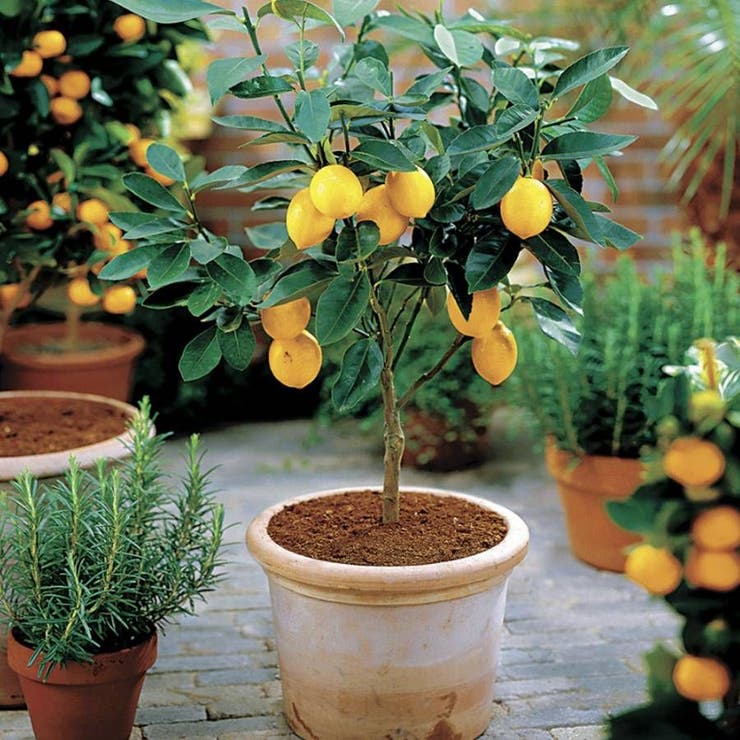Citrus 'Meyer' Lemon Tree

In stock
| Ships according to schedule- Buy 3 for $90.00 each and save 10%
Description / Citrus 'Meyer' Lemon Tree
An improved Meyer lemon, Citrus 'Meyer' Lemon Tree is a semi-dwarf cultivar that is valued not only for fruit production but also for ornamental purposes and can fit beautifully into an edible landscape. The tree blooms prolifically in clusters of showy, highly fragrant, waxy white blossoms with yellow anthers. Citrus 'Meyer' Lemon Tree produces an abundant crop of large, rounded fruit with thin skin nearly year-round in warm climates. The fruit is juicier, less acidic, and sweeter than common lemons. The fruit should be allowed to fully ripen upon the tree, becoming golden-hued and soft to the touch.
In the garden, Citrus 'Meyer' Lemon Tree can grow to between 8 and 12 feet tall at full maturity (about 4 years). But the plant can be pruned to maintain any desired size and shape. In cooler climates, the tree can be grown in a container and moved indoors during winter, if ample sunlight is provided. Container growth is likely to be smaller and vary with pot size, which should be at least 5 gallons and about 12 to 15 inches deep. Although a container grown tree will not reach its full growth potential, it will still flower and set full-sized fruits.
A popular variety, Citrus 'Meyer' Lemon Tree, a broadleaf evergreen, has a compact, shrub-like habit of handsome, shiny, aromatic foliage and a moderate growth rate. It makes an excellent accent or specimen and can be trained as an espalier. But it is also a great houseplant.
Citrus 'Meyer' Lemon Tree requires at least 8 hours of full sun a day and grows best in well-draining, sandy soil that has a neutral to slightly acidic pH. It has the best winter hardiness of any of the lemon trees and will briefly tolerate temperatures around 32°F, but the plant should be protected when temperatures fall below 32°F. It grows best in climates with daytime temperatures in the low 70°F range and nighttime temperatures in the high 50°F range. If container grown, the plant should be brought inside at the first sign of frost and placed in a location with plenty of bright sunshine. It should not be kept too warm, however, because cooler winter temperatures encourage flowering. The tree is self-pollinating and will bear fruit without any pollen from other varieties.
Citrus trees will ship at the appropriate planting time based on your growing zone. Citrus trees do not ship in December or January. Plant height is 18-36" when shipped.
Product Details
| Item Form | Tree Sleeve |
|---|---|
| Genus | Citrus |
| Species | x meyeri |
| Variety | 'Meyer' |
| Product Classification | Fruit, Trees, Trees and Shrubs |
| Habit | Upright |
| USDA Zone Low | 8 |
| USDA Zone High | 11 |
| Sun / Shade | Full Sun |
| Bloom Color | White |
| Max Bloom Size | 1.00 |
| Bloom Season Start | Mid Winter |
| Foliage Color | Dark Green |
| Resistance | Heat Tolerant |
| Special Features | Bloom First Year, Edible, Fragrance |
| Uses | Containers, Cuisine, Ornamental, Specimen |
| Zone | 8, 9, 10, 11 |
| State Shipping Restrictions | AK, AL, AZ, FL, GU, HI, PR, TX, VI |
| Shipping Method Restrictions | expressShipping |




